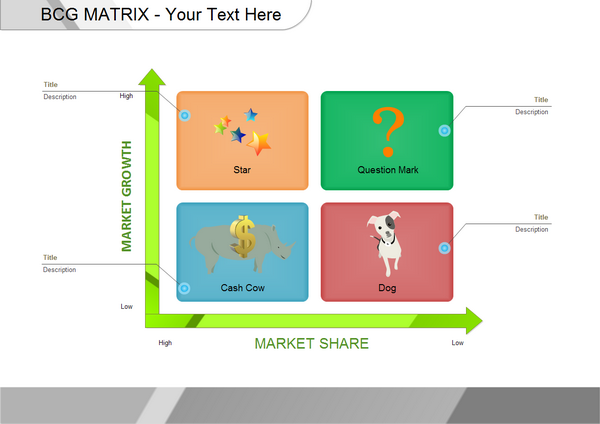
Jobs’s word was final, and Apple’s engineers and designers’ job was to do what he told them, not question it. Because Jobs was a visionary, this environment created some of the most successful products in history. Top-down management, also known as autocratic leadership, is the most common management strategy. It involves a company’s higher-ups deciding on its strategy and direction, then passing their instructions on to the front-line staff to execute through middle managers. This approach integrates two or more logically related modules, then tests them.
There isn’t a lot of room for growth and development, except for those chosen for management. Ultimately, the organization also isn’t benefiting from the range of insights or abilities the employees might have to offer. High-performance standards and unattainable goals can put a lot of pressure on employees. This may create a hostile competitive environment, where people focus on protecting themselves and keeping their status.
Drivers
A successful execution aligns all the actions and decisions of your people with your plan. It includes measuring what matters, reviewing often and taking action on any insight that derives from your reports. Another major distinction is that top down technique examines the risk by collecting the internal operational failure impacts, but the bottom-up method evaluates individual processes risk with models’ support. Though top-down methodology has some advantages, there are also drawbacks to consider in how this approach might impact individual team members and overall team morale. It can limit creativity and slow down problem-solving, so it may not be the best choice for teams that require greater flexibility and responsiveness.
What is the first step of the bottom-up approach?
The initial focus of the bottom-up approach is on the fundamentals and values of the company. A basic first step to success is looking at the smaller picture and identifying what the specific organization is doing well (or what could be improved).
Keep in mind that as an organization evolves, its management style should evolve with it. As organizations grow, expand into different areas and new types of leaders arrive, the process of company goal-setting needs to be flexible to accommodate for these changes. If you work in a heavily regulated industry or a much larger company, consider a top-down approach.
What are the advantages of top down integration testing?
The aim of integration testing is to test the interfaces between the modules and expose any defects that may arise when these components are integrated and need to interact with each other. As against moving in the direction of depth of the connected tree, breadth-first integration testing focuses on moving horizontally, i.e., along the breadth. The final integrated product remains the same, just the transition to reach there is a little different.
- This tool offers several integration testing tool sets that match the compliance standards of different organizations.
- Among other achievements, Niklaus Wirth, the developer of Pascal programming language, wrote the influential paper Program Development by Stepwise Refinement.
- The top-down approach treats the customer as an energy sink and does not distinguish energy consumption due to individual customer type.
- The big picture, long-term goals, and budgeting are managed and communicated to employees and staff.
- Since all decisions are made at the top, a mismatched project management hire can have a bigger impact on the success of the team.
Once the lower level modules are tested and integrated, then the next level of modules are formed. In a bottom-up approach, the individual base elements of the system are first specified in great detail. This strategy often resembles a “seed” model, by which the beginnings are small, but eventually grow in complexity and completeness. Object-oriented programming (OOP) is a paradigm that uses “objects” to design applications and computer programs. Bottom-Up approach is one of the best way to test each and every major as well as minor component of the software. It is a type of integration testing in which system integration begins with the integration of the lowest level modules.
Brief Description of Integration Test Plans
When approaching a project from the top down, higher-level decision-makers start with a big picture goal and work backward to determine what actions different groups and individuals will need to take in order to reach that goal. Many teams go with the top-down approach because it eliminates confusion, reduces risk, and keeps initiatives organized across larger teams. Below, we break down how the top-down approach compares to the bottom-up approach so you can decide which best fits your leadership style.

One challenge with the top-down management approach is that it requires proactive work to keep non-leadership team members feeling engaged, connected, and respected. When all decisions are made at the top, the rest of the team might feel that their feedback and opinions aren’t valued. Since all decisions are made at the top, a mismatched project management hire can have a bigger impact on the success of the team. Many process problems are only visible at the lower level, so project managers who fail to solicit feedback from individual team members before making decisions can inadvertently cause significant problems, delays, and losses. Smaller teams or teams with a narrower project focus will have the freedom to lean more heavily on the bottom-up style.
Top-down and bottom-up approach in C/C++ programming
Diversity of individual perspectives can provide you with abundant material. Exceptions can also be met even in the healthcare sector – in particular, in the Netherlands, where Buurtzorg, a healthcare organization, was founded on the principles of self-managed, nurse-led teams. How does top-down management compare to the bottom-up approach? How do you know which one is best in your business or department? The result is a framework that the program can use to deliver the required functionality. The top down integration testing and bottom up integration testing work contrary to each other in almost every aspect.
Modeling community standards for metadata as templates makes … – Nature.com
Modeling community standards for metadata as templates makes ….
Posted: Sat, 12 Nov 2022 08:00:00 GMT [source]
Scenarios can be related to personas that amplify narrative experiences by illustrating typical users. A crucial part of the top-down approach is that you try to see the whole picture, from afar, with few details, looking for discernible patterns. You observe the whole system, you try to understand its mechanisms, and then, bottom up approach uses flow for program execution you dive in only when it is relevant. Not only will this method save time, it will also render more effective results. The top-down approach of lithography described in the previous section is one of the expensive stages in fabrication of CMOS circuits and requires high levels of cleanliness to produce high yields.
What is integration testing?
If i need 5th fibonacci number i am actually calculating 1st, then second then third all the way to up 5th number. While a bottom-up approach doesn’t work for most medium or large organizations, strict top-down management is rarely an effective approach in the modern workplace. Taking a hybrid approach, where employees are invited to have their say through surveys and within one-to-ones with their manager, is often the best approach for businesses today. One-to-ones between higher-ups and their reports are where you’ll often get the most valuable feedback for your business. And Assembly’s One-to-One Direct Report Flow (and the One-to-One with Manager Flow for reports) helps leaders get invaluable insights from their team that they can then take into the decision-making process (here’s how). For example, Assembly’s Manager Feedback Flow can help leaders quickly get bottom-up feedback from their direct reports.

What is top-down approach used for program execution?
What is a Top-down Approach? A top-down approach is about breaking down a system into the subsystems that make it up. The process can be repeated to break down subsystems into low-level elements like classes and methods.